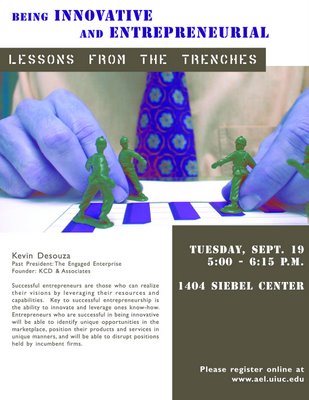Strategic Sourcing of Innovations: A Strategic Capability
I gave the inaugural talk for the 5th Annual International Smart-Sourcing Conference
Los Angeles, CA. Sept. 21-23, 2006. The abstract of the talk is as follows:
Organizations are engaging in sourcing initiatives at an astounding pace. First, there was the sourcing of mundane and structured work; this was followed by the sourcing of knowledge work such as software development and call centers. Today, we are entering the era of sourcing innovation work. Sourcing of innovation can take many forms and types, and can vary in the level of intensity. For example, some organizations have outsourced their entire research and development functions, while others engage in the sourcing of problems on a need-basis. The challenge facing organizations today is severe – how to create, develop, and manage capabilities for sourcing innovation. Developing capabilities in sourcing of innovation is not the same as using outsourcing for conducting knowledge work or even low-cost manufacturing operations. The nature of innovation projects requires us to pay careful attention to several salient issues, for example the appropriation of rents from innovation. This presentation will describe the changing nature of outsourcing efforts from cost-focused to innovation-driven. A framework to manage the sourcing of innovation will be presented. Lessons learnt and best practices on the sourcing of innovation will also be discussed. Organizations that can leverage sourcing as a strategic weapon for innovation will have a decisive competitive advantage over their peers.


